Abstract
Although certain histopathologic patterns of epithelial proliferative breast disease are well established as indicating an increased relative risk for the subsequent development of mammary carcinoma, the biologic characterization of these changes is not known. One evident histologic characteristic of epithelial hyperplasia is the partial or complete loss of normal cellular polarity. Nonerythroid spectrin (fodrin) is a structural protein whose function is related to maintenance of cellular polarity. By immunohistochemical analysis, normal breast luminal epithelia contain fodrin confined to a characteristic basolateral distribution. Proliferative breast disease of the common type partially loses this polarized distribution of fodrin; fodrin immunoreactivity is not limited to a basolateral location but is present around the cell membrane and is inconsistently present at luminal interfaces. Whether this change in distribution of fodrin is a permissive event in the development of proliferative disease or merely an associated finding is not known.
Full text
PDF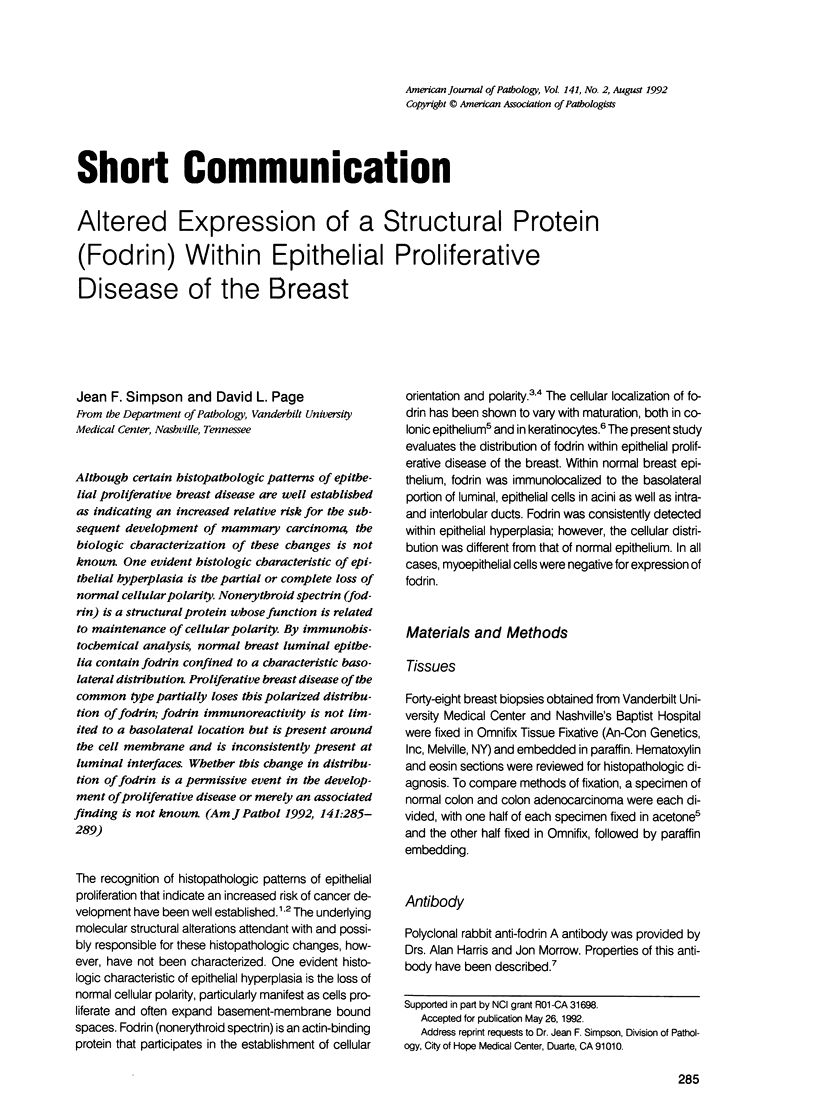
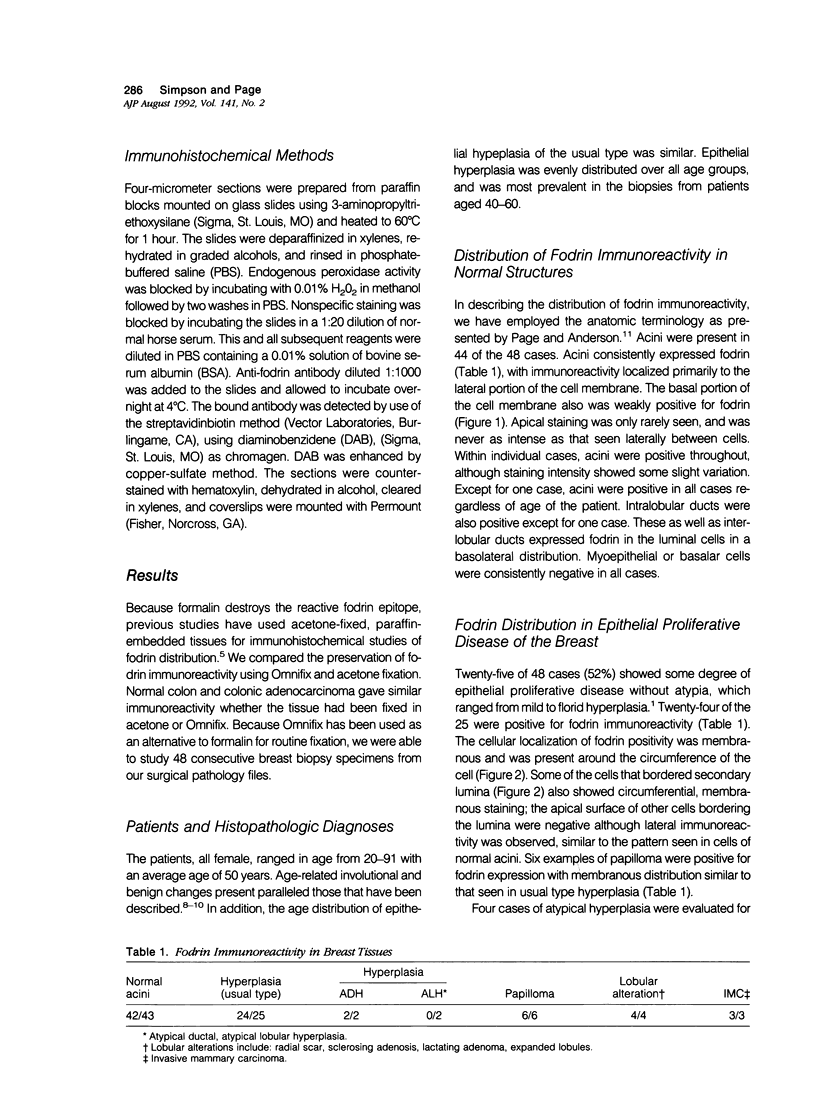
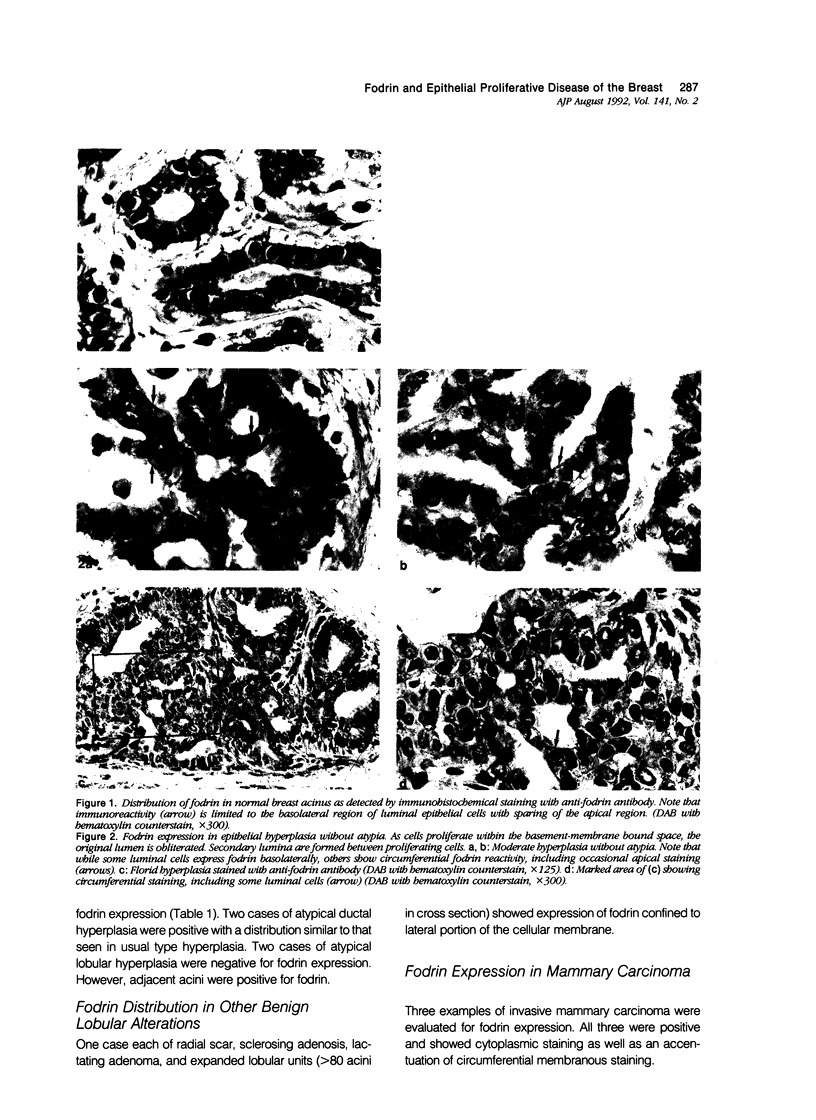
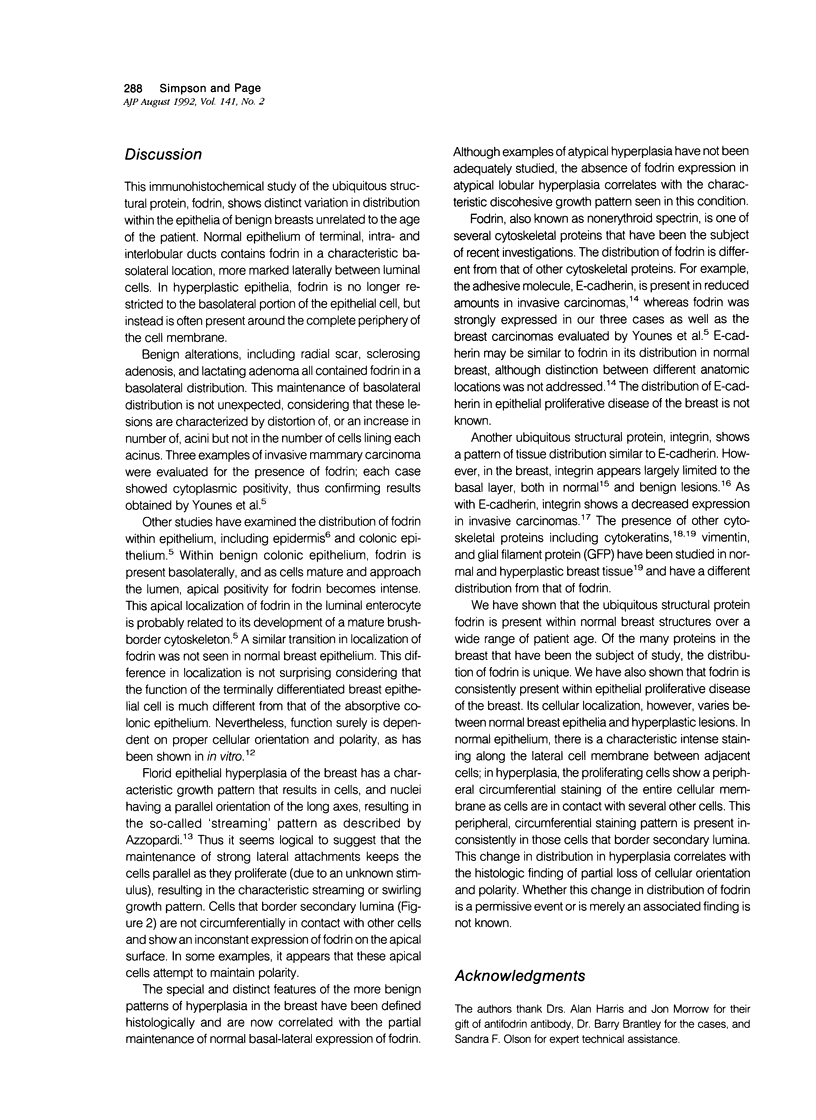
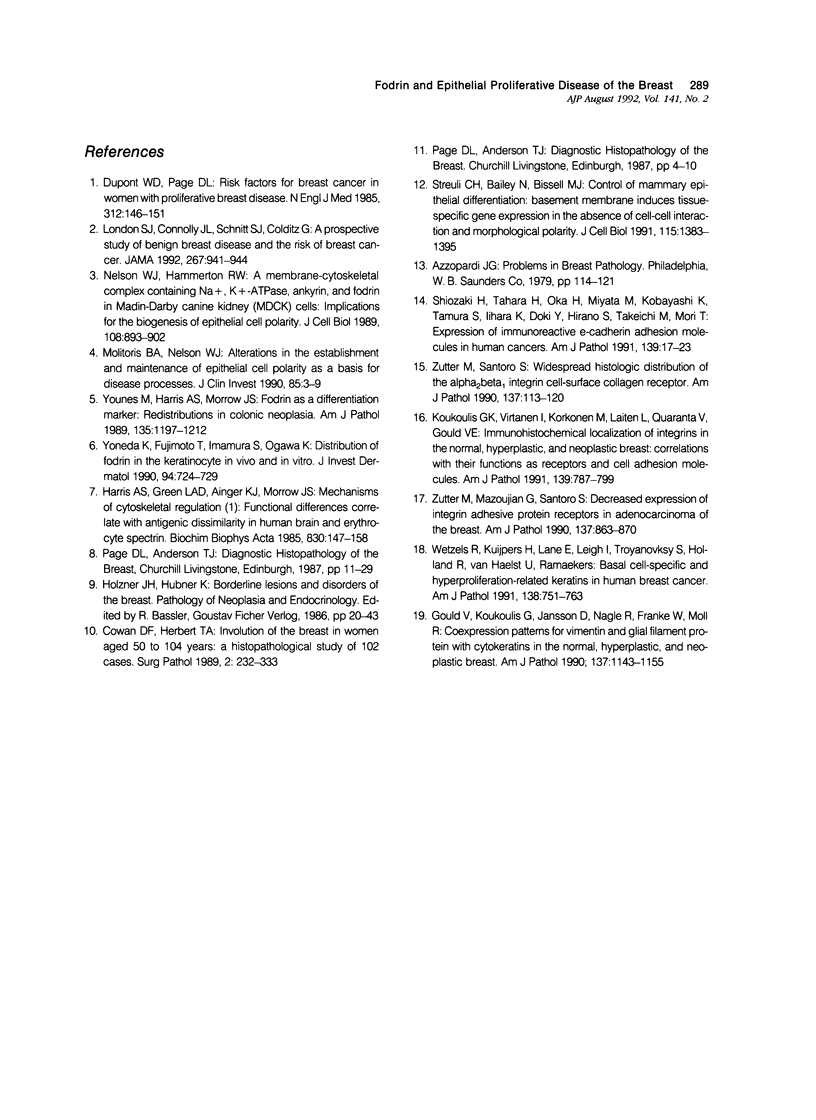
Images in this article
Selected References
These references are in PubMed. This may not be the complete list of references from this article.
- Dupont W. D., Page D. L. Risk factors for breast cancer in women with proliferative breast disease. N Engl J Med. 1985 Jan 17;312(3):146–151. doi: 10.1056/NEJM198501173120303. [DOI] [PubMed] [Google Scholar]
- Gould V. E., Koukoulis G. K., Jansson D. S., Nagle R. B., Franke W. W., Moll R. Coexpression patterns of vimentin and glial filament protein with cytokeratins in the normal, hyperplastic, and neoplastic breast. Am J Pathol. 1990 Nov;137(5):1143–1155. [PMC free article] [PubMed] [Google Scholar]
- Harris A. S., Green L. A., Ainger K. J., Morrow J. S. Mechanism of cytoskeletal regulation (I): functional differences correlate with antigenic dissimilarity in human brain and erythrocyte spectrin. Biochim Biophys Acta. 1985 Aug 8;830(2):147–158. doi: 10.1016/0167-4838(85)90022-6. [DOI] [PubMed] [Google Scholar]
- Koukoulis G. K., Virtanen I., Korhonen M., Laitinen L., Quaranta V., Gould V. E. Immunohistochemical localization of integrins in the normal, hyperplastic, and neoplastic breast. Correlations with their functions as receptors and cell adhesion molecules. Am J Pathol. 1991 Oct;139(4):787–799. [PMC free article] [PubMed] [Google Scholar]
- London S. J., Connolly J. L., Schnitt S. J., Colditz G. A. A prospective study of benign breast disease and the risk of breast cancer. JAMA. 1992 Feb 19;267(7):941–944. [PubMed] [Google Scholar]
- Molitoris B. A., Nelson W. J. Alterations in the establishment and maintenance of epithelial cell polarity as a basis for disease processes. J Clin Invest. 1990 Jan;85(1):3–9. doi: 10.1172/JCI114427. [DOI] [PMC free article] [PubMed] [Google Scholar]
- Nelson W. J., Hammerton R. W. A membrane-cytoskeletal complex containing Na+,K+-ATPase, ankyrin, and fodrin in Madin-Darby canine kidney (MDCK) cells: implications for the biogenesis of epithelial cell polarity. J Cell Biol. 1989 Mar;108(3):893–902. doi: 10.1083/jcb.108.3.893. [DOI] [PMC free article] [PubMed] [Google Scholar]
- Shiozaki H., Tahara H., Oka H., Miyata M., Kobayashi K., Tamura S., Iihara K., Doki Y., Hirano S., Takeichi M. Expression of immunoreactive E-cadherin adhesion molecules in human cancers. Am J Pathol. 1991 Jul;139(1):17–23. [PMC free article] [PubMed] [Google Scholar]
- Streuli C. H., Bailey N., Bissell M. J. Control of mammary epithelial differentiation: basement membrane induces tissue-specific gene expression in the absence of cell-cell interaction and morphological polarity. J Cell Biol. 1991 Dec;115(5):1383–1395. doi: 10.1083/jcb.115.5.1383. [DOI] [PMC free article] [PubMed] [Google Scholar]
- Wetzels R. H., Kuijpers H. J., Lane E. B., Leigh I. M., Troyanovsky S. M., Holland R., van Haelst U. J., Ramaekers F. C. Basal cell-specific and hyperproliferation-related keratins in human breast cancer. Am J Pathol. 1991 Mar;138(3):751–763. [PMC free article] [PubMed] [Google Scholar]
- Yoneda K., Fujimoto T., Imamura S., Ogawa K. Distribution of fodrin in the keratinocyte in vivo and in vitro. J Invest Dermatol. 1990 May;94(5):724–729. doi: 10.1111/1523-1747.ep12876298. [DOI] [PubMed] [Google Scholar]
- Younes M., Harris A. S., Morrow J. S. Fodrin as a differentiation marker. Redistributions in colonic neoplasia. Am J Pathol. 1989 Dec;135(6):1197–1212. [PMC free article] [PubMed] [Google Scholar]
- Zutter M. M., Mazoujian G., Santoro S. A. Decreased expression of integrin adhesive protein receptors in adenocarcinoma of the breast. Am J Pathol. 1990 Oct;137(4):863–870. [PMC free article] [PubMed] [Google Scholar]
- Zutter M. M., Santoro S. A. Widespread histologic distribution of the alpha 2 beta 1 integrin cell-surface collagen receptor. Am J Pathol. 1990 Jul;137(1):113–120. [PMC free article] [PubMed] [Google Scholar]




